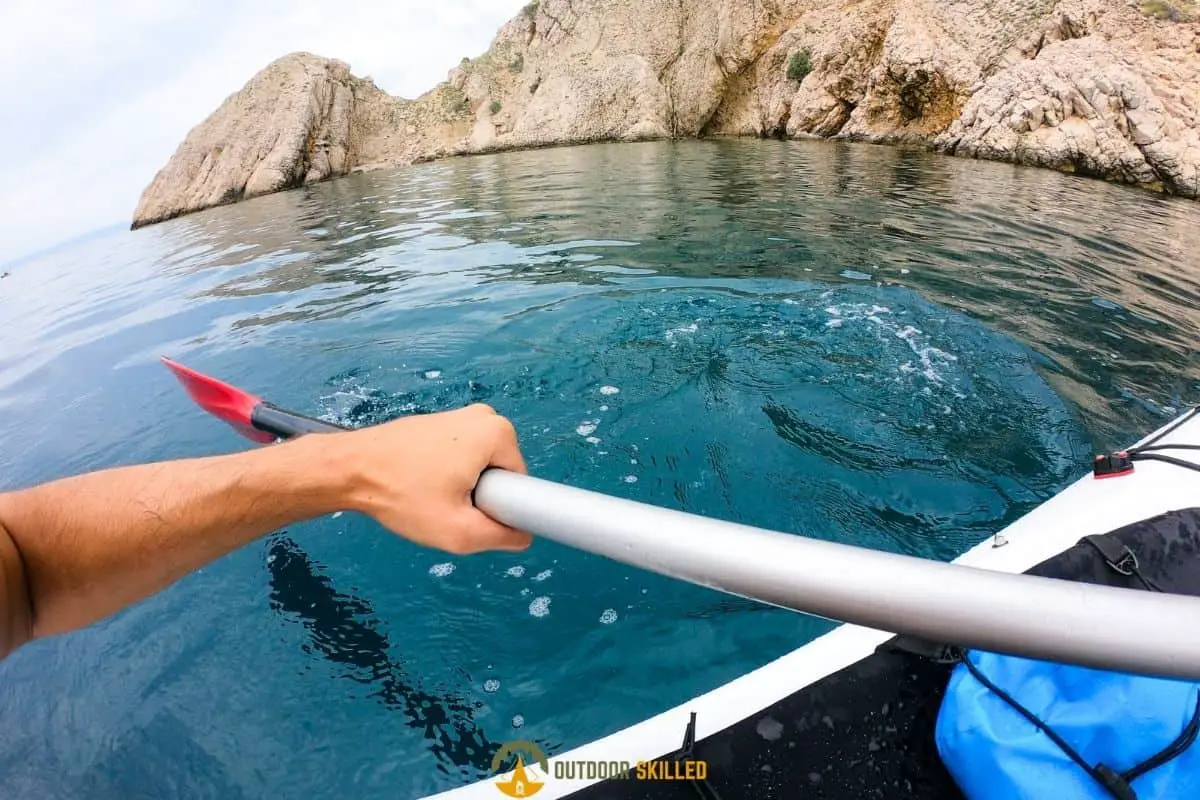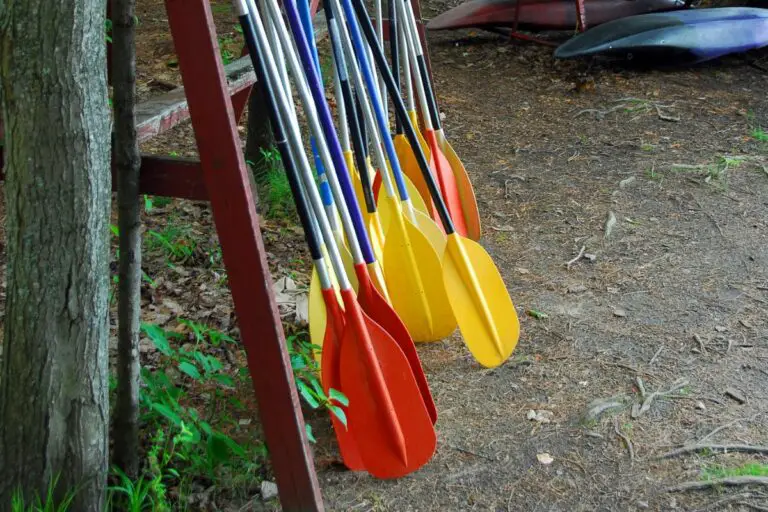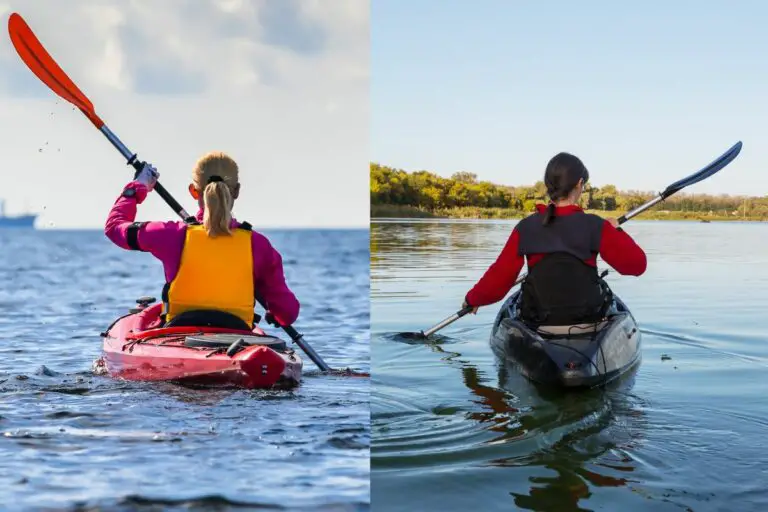Why Does Your Kayak Keep Turning? 3 Easy Solutions
Having your kayak turn to one side or spin while you’re out on the water can be a very frustrating experience, especially for beginners. Luckily, there’s an explanation to why this problem happens and a way to make it stop.
So, why does your kayak keep turning? The main reason why your kayak keeps turning is your paddling technique. If you are not correctly holding your paddle or executing your strokes, your technique will be lacking. Other reasons include having poor body posture, external forces like the wind, or your kayak might be defective.
Keep reading to learn more about the factors that cause your kayak to turn or spin and how to prevent it from happening. You can also upgrade your Kayak now without breaking the bank by checking my picks for the best Kayaks under $1,000 here or the best ones under $500 here.
Table of Contents
Why Does Your Kayak Keep Turning or Spinning?

A kayak is a dynamically unstable system. Because of the way it’s built, it can be difficult to control if you don’t have the skill.
There are some factors that may be the reason why you can’t control the turning or spinning of your kayak.
Let’s take a look at each of these factors in more detail:
- Your paddling technique is lacking
Your technique might be lacking because of the type of paddle you choose, your hand positioning or how you’re holding the paddle and also the way you’re executing your strokes.
It’s important to monitor your paddling technique and improve it to be able to control your kayak better and keep it straight.
- You have poor body posture
How your body is positioned in the kayak can also have a great effect over how your kayak moves.
Being aware of your body posture and correcting it until it becomes a habit will help you with controlling your kayak and stopping it from spinning and turning.
- Interference from external forces
External forces like the wind or current can interfere with your kayak’s movement and cause you to lose control over your kayak.
It’s important to check the wind and current conditions before going out on the water to be able to work with or against their direction and keep your straight
- Your kayak is damaged or defective
If you’re doing everything right and your kayak still keeps turning and spinning, the problem might not be you.
It’s possible that your kayak is manufactured with a defect or it got damaged in use. So, it’s very important to test your kayak before buying it and regularly check it for signs of damage.
How to Prevent Your Kayak from Turning or Spinning?
Now that you’re aware of the factors that cause your kayak to turn or spin, here’s a complete guide on how to prevent this from happening.
How to Improve Your Paddling Technique?
First, you need to use the type of paddle blades that suits your needs.
There are three main paddle blade types:
- Feather blades – These are more common. They’re easier to use for beginners.
- Asymmetrical blades – These can help more with tracking straight.
- Curved blades – These can help create a more powerful stroke.
The ideal blades for keeping your kayak straight are feather blades. They reduce wind resistance and give more momentum for the kayak to move forward.
When you gain more experience and improve your paddling skills, you can try to switch to other types of blades to see which one fits your paddling style better.
Next, you need to make sure you’re holding your paddle correctly.
Here are some pro tips you can follow to improve how you handle your paddle:
- Make sure the position of your hand on the paddle is correct. Ideally, your hands should be shoulder width apart when holding the paddle and your elbows should be at a 90-degree angle. This position is commonly referred to as “the paddler’s box.” It can be difficult to maintain as a beginner, so it’s important to keep practicing.
- You can use waterproof tape to mark down where you’re holding the paddle to make sure you’re consistently holding the paddle the same way every time you use it.
- Remember that your dominant hand is stronger and it’s responsible for dictating the direction of your kayak. For example, if you’re right handed, your right side will be stronger and your kayak will likely turn more toward the left. So, try to practice giving equal force using both of your hands.
Finally, you need to practice properly executing your strokes.
You need to be aware of how strongly your paddle hits the water. Sometimes your paddle can dip into the water a little deeper on one side and the deeper the paddle goes, the more momentum is generated from that stroke which leads to turning your kayak to one side.
You also need to make sure that your paddle is sweeping the water at the same distance from the kayak on each side. The closer the sweep is to the kayak the more spin it will create. So, it’s important to match your strokes on both sides.
There are a lot of different paddle strokes used by kayakers to achieve different goals. However, the forward stroke is the most common to create a strong momentum to keep your kayak in a linear direction. To perfect this stroke, you will need to practice it repeatedly.
How to Maintain a Good Body Posture?
Maintaining a good body posture while paddling is crucial to keeping your kayak straight and also to help you avoid getting fatigued quickly.
Here some pro tips you can follow to improve your posture while kayaking:
- Try to keep your body in an upright position while relaxing your shoulders and your stomach.
- Make sure that your shoulders and arms can give extra support while depending on your upper body and legs to do most of the work.
- Learn to rotate your hips to shift your body weight so that you can make slight adjustments to your kayak while you’re paddling.
- Try to avoid putting pressure on one side of the kayak when moving and distribute your weight evenly.
- Make sure that your feet are resting on the foot rests and not pushing too hard on one or both of them because pushing too hard on one footrest while paddling can lead the kayak to turn slightly to one side.
- Bend your legs slightly for more balance. You will be able to rotate your upper body better and give your arms more freedom to paddle more efficiently.
- Keep your eyes focused on the horizon where you are paddling. This will help you maintain stability if you find your kayak spinning or turning while you paddle.
For more tips, check out the video below:
How to Test Your Kayak for Damage?

The best way to check a kayak for any defects before buying it is by taking it out for a test drive. You can ask a friend to test the kayak as well to make sure the problem is not with your paddling technique. If your friend also experiences turning and spinning when trying the kayak, then there’s a chance that it’s defective.
You can also do a quick check for any damage from use by turning your kayak upside down and searching for any deep cuts or scratches on the bottom. Shallow cuts and small scratches, but anything deep and long is a sign of damage and will cause you more problems later.
Another way to test your kayak is to find a shallow water pool and put your kayak in the water. Walk alongside the kayak until the water is about hip deep. Then give your kayak a gentle push and observe how it moves. If the kayak leans to one side, this means it is damaged.
You need to be careful when you’re doing this test. Make sure the water you are getting into is safe and that you’re pushing your kayak in a safe direction and not deeper into the water where it may be hard to retrieve.
Related Questions
How to Execute a Forward Stroke?
The way to execute a forward stroke is to catch the water by applying force to your paddle. Then you need to push forward by pulling the paddle back to your hip. When the paddle reaches the side of your hip, you release the water by pulling the blade out. These three phases will create a string momentum that will push your kayak forward.
Does The Paddle Size Matter When Kayaking?
Having the correct paddle size can help you improve your paddling technique and avoid fatigue. Choosing the correct size depends mainly on the size of your torso as it determines the distance between you and the water when you’re in the kayak. The longer your torso is, the longer paddle needs to be.
What Does Tracking Mean When It Comes to Kayaking?
Tracking refers to the amount of control you have when steering your kayak. It also refers to how easily a kayak turns. Several factors can affect tracking like wind and current conditions or the paddling technique of the kayaker. Tracking is a skill that requires practice.








